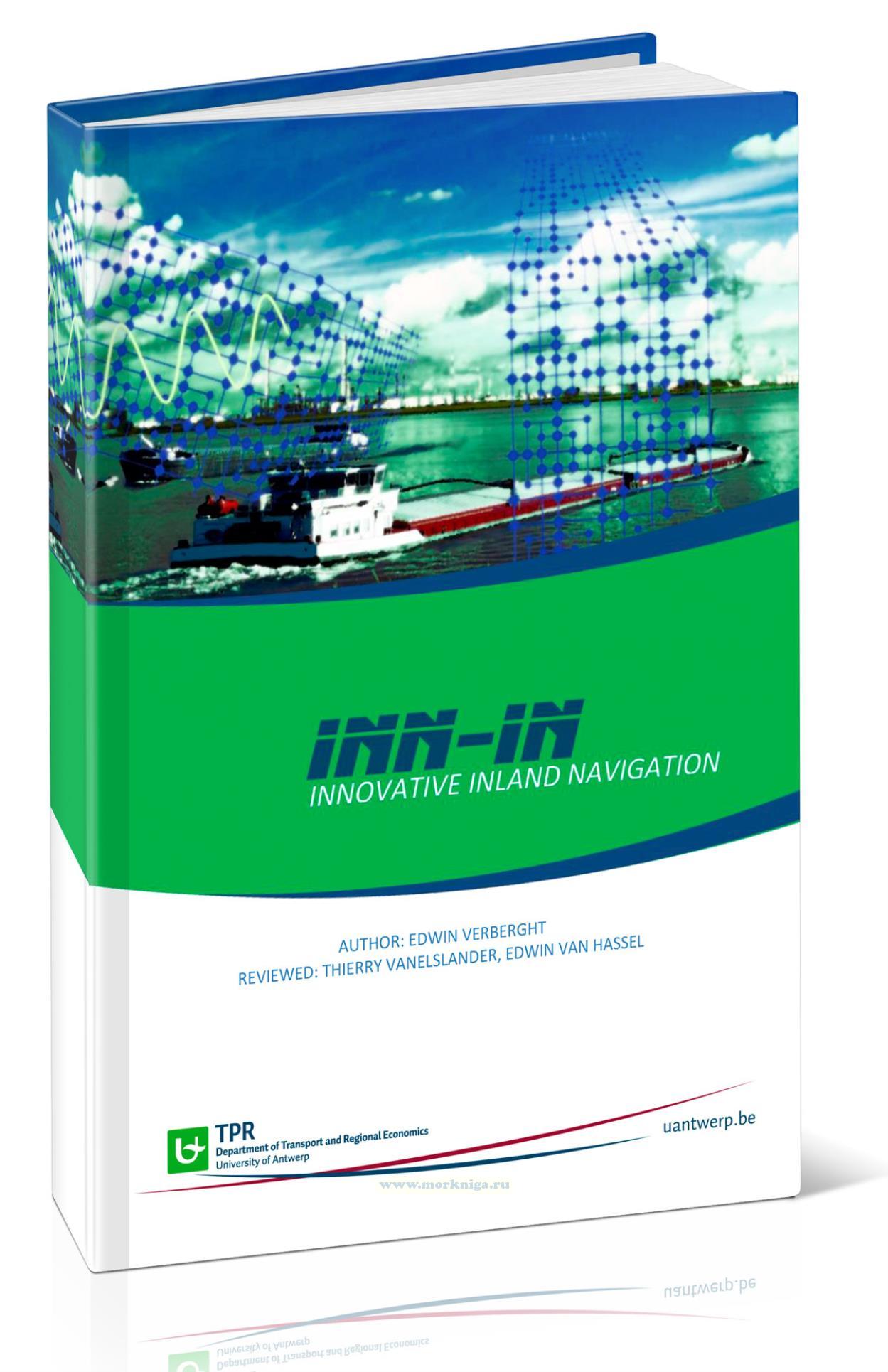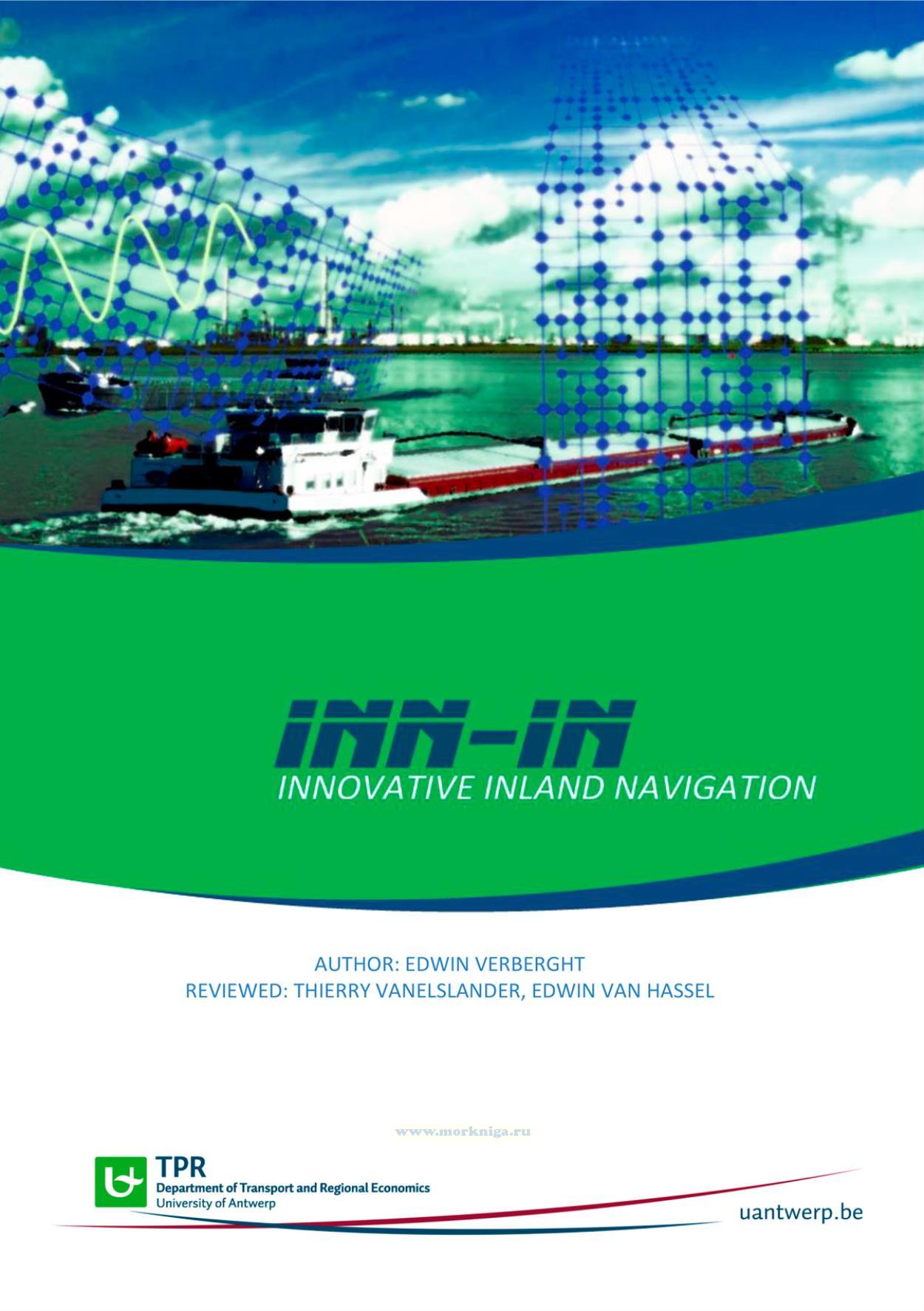Сб с 10 до 16
INN-IN: Innovative Inland Navigation/Инновационная навигация внутреннего судоходства
Книга на английском языке
This research looked for positive innovative business cases in inland navigation and asked what policy could do. In building up the research design, it was decided not to list up as much innovations as possible but to go deeper with in-depth case analysis. Five cases were carefully selected.
The innovation cases can be divided in three clusters with specific targets:
Small waterways:
- Innovation that is implemented on the small waterways aims at reviving business on these parts of the waterway network which are increasingly abandoned because of several identified reasons.
- The development of small barge convoy concepts and the pallet shuttle barge are selected to examine closer.
Automation and digitalization:
- The case of e-bargebooking targeting organizational improvements in reducing empty trips, facilitating one-to-one communication between operators and customers and providing relatively and possibly cheaper transport because of lower charterers provisions which could invite more users.
- The case of the automated vessel that could reduce accidents, emissions and allow inland navigation to become more integrated in multimodal logistics.
Alternative fuels: it is clear that inland navigation is lagging behind the developments in other modes concerning emissions and greenhouse gases, despite the lower external costs of inland navigation. More stringent emission standards (stage V) and the expected increasing fuel cost, are the main incentives to develop innovations in this field. The case of LNG is considered to be the most advanced option and is selected as case.
To answer the research questions, a combination of research methods is chosen. This combination comprises systems of innovation approach where innovation barriers and success factors are identified, social cost-benefit analysis where the business case of the innovation is examined and a policy analysis that takes in account the current institutional setting of the European inland navigation.
Contents
List of figures
List of tables
Used abbreviations
Management Summary
1. Institutional framework
2. e-Bargebooking
3. Small barge convoy
4. Pallet shuttle barge
5- Automated vessel
6. Alternative fuels: the LNG case
1. General findings
I. Introduction
1. Research question
2. Research team and steering group
3. Research stages
4. Selection process of cases
5. Outline of the report
II. Methodological framework
1. Multiple case analysis
2. Methodology of applied case analyses
III. Institutional Setting
1. Policy actors
2. Current developments
3. Overview of members
4. Policy network
5. Reviewing the EFIN report
6. Pan-European Inland Navigation Policy
7. Costs and benefits of PEINP
8. Policy tools
9. Multilevel Governance
10. Conclusion
IV. e-Bargebooking
1. Definitions
2, Systems of Innovation Analysis
V. The small barge convoy
1. Definitions and scope delineation
2. Systems of Innovation Analysis
VI. The Pallet Shuttle Barge
1. Definitions
2. Fleet segment of the PSB
3. Systems of Innovation Analysis
VII. The Automated Vessel
l. Introduction
2. Literature review
3. Systems of Innovation Analysis
4. SCBA
5. Policy Analysis
6. Conclusion
7. Further research in automation
VIII. Fuel alternatives: the LNG case
1. Introduction
2. Literature review and definitions
3. Systems of Innovation Analysis
4. SCBA
5. Policy Analysis
6. Conclusion
IX. General conclusion
X. Policy recommendations
l. Institutional framework
2. e-Bargebooking
3. Small barge convoy and pallet shuttle barge
4. Automated vessel
5. Alternative fuels: the LNG case
XI. Discussion and further research
Bibliography
Annexes
1. Annexes to methodological framework
2, Annex of the Small barge convoy case
3, Annexes of the automation case
4. Annexes of the LNG case

